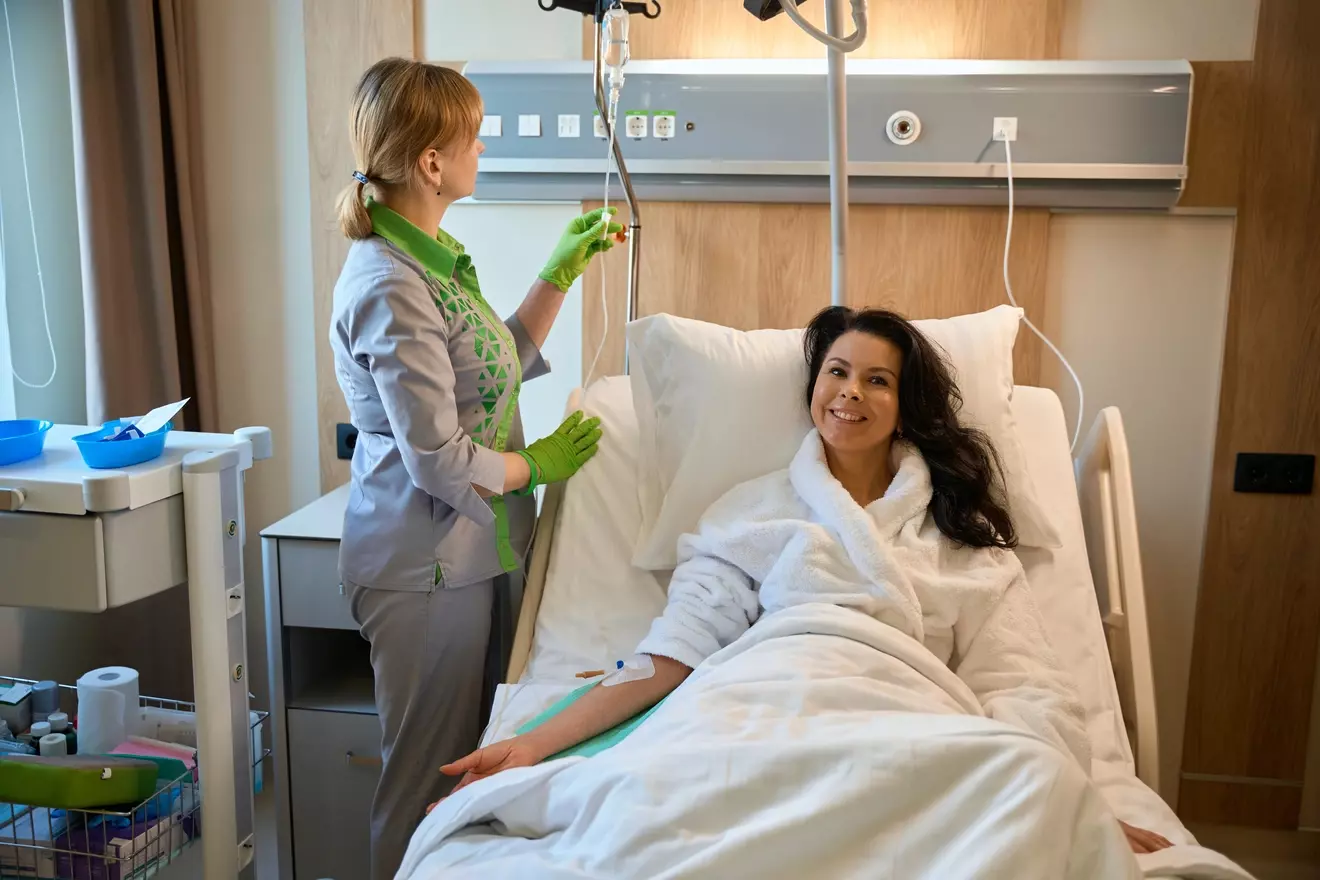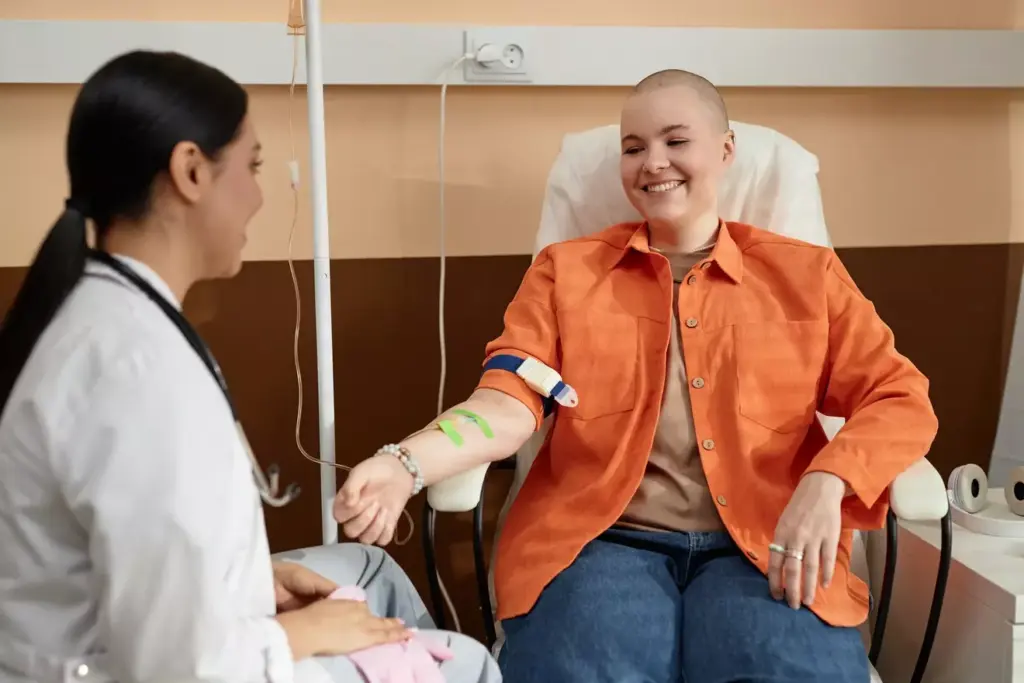Last Updated on November 3, 2025 by mcelik

At Liv Hospital, we lead in innovative cancer care. We offer personalized treatment options like CAR T-cell therapy. This method uses a patient’s immune cells to fight blood cancers, giving new hope to those affected.
CAR T-cell therapy is a form of immunotherapy. It makes a patient’s T-cells attack cancer cells. This precision medicine has shown great promise in treating blood cancers. It offers a chance for a cure for patients who haven’t responded to other treatments.

CAR T-cell therapy has changed cancer treatment a lot. It offers a personalized way to fight blood cancers. This therapy uses a patient’s T cells to attack cancer cells.
Chimeric Antigen Receptor (CAR) T-cell therapy starts with taking T cells from a patient’s blood. These T cells are then changed to recognize a specific protein on cancer cells. This makes CAR T cells better at finding and attacking cancer cells.
CAR T therapy has changed cancer treatment a lot. It offers a chance for a cure for some blood cancers. It’s tailored to each patient, showing great promise in trials. Many patients have seen their cancer go away completely.
| Key Benefits | Description |
|---|---|
| Personalized Treatment | CAR T therapy is tailored to each patient’s specific cancer type. |
| Targeted Approach | CAR T cells are engineered to target specific cancer cells, reducing harm to healthy cells. |
| Potential for Cure | Many patients have achieved complete remission with CAR T therapy, showing new hope for a cure. |
As we keep learning about CAR T-cell therapy, it’s clear it’s changing cancer care. With more research, we’ll see even better treatments in the future.

CAR T therapy is a complex process that modifies white blood cells to fight cancer. It uses the body’s immune system to target and destroy cancer cells more effectively.
CAR T cell therapy starts with taking T cells from the patient’s blood. These T cells are then changed in a lab to produce a special receptor. This receptor lets them recognize and attack specific proteins on cancer cells.
The steps to modify T cells include:
The immune system is key to CAR T therapy’s success. It boosts the natural ability of T cells to fight cancer. The modified T cells bind to cancer cells, triggering an immune response that destroys them.
This immune response can also provide long-term protection against cancer. This makes CAR T cell therapy a potentially curative option for some blood cancers.
The CAR T-cell therapy starts with turning a patient’s cells into cancer fighters. This treatment has many steps, from collecting cells to infusing them back. Each step is important and needs careful attention.
The first step is collecting cells through apheresis. This method takes T cells from the blood using a special machine. Apheresis is safe and quick, usually taking a few hours.
During apheresis, the machine separates T cells from the blood. It then returns the blood to the patient.
After collecting T cells, they go to a lab for genetic changes. Here, they get a special receptor to find and attack cancer cells. They are given this receptor using viral vectors or gene-editing. The T cells are then grown and ready for re-infusion.
The genetic changes in the lab are very advanced. Quality checks are strict to make sure the T cells are safe and work well.
Before the T cells are given back, patients get a special treatment. This treatment, called conditioning, helps the body accept the new cells. The type of treatment depends on the patient and the treatment plan.
The T cells are then given back to the patient through an IV. This process is usually well-tolerated, but patients are watched closely for any reactions.
After the infusion, patients are closely monitored for how they respond and any side effects. Managing side effects is key to the treatment’s success. Our team supports patients every step of the way, making sure they get the care they need.
CAR T-cell therapy has changed how we treat some blood cancers. Now, there are several FDA-approved options. These therapies have shown great promise in treating certain types of leukemia, lymphoma, and multiple myeloma.
The FDA has approved CAR T-cell therapies for leukemia and lymphoma. Here are some:
These therapies have shown great results in clinical trials. They offer new hope to patients with aggressive blood cancers.
CAR T-cell therapy is also promising for multiple myeloma. Idecabtagene vicleucel (Abecma) is the first FDA-approved CAR T-cell therapy for relapsed or refractory multiple myeloma in adults. It targets the BCMA protein on myeloma cells, giving patients a new treatment option after other therapies have failed.
Clinical trials have shown Abecma can lead to deep and lasting responses in patients with heavily pretreated multiple myeloma. This highlights the promise of CAR T-cell therapy in this disease.
The FDA’s approval of multiple CAR T-cell therapies is a big step forward in cancer treatment. As research continues, we can expect more advancements in the field.
Researchers are working to improve CAR T-cell therapies. They aim to make them more effective, safer, and treat more cancers. Some areas being explored include:
As these advancements continue, CAR T-cell therapy will play a bigger role in cancer treatment.
Recent breakthroughs in CAR T therapy are now treating cancers that were hard to target before. Researchers are exploring its full power, leading to new hopes for solid tumors.
Clinical trials are underway to see if CAR T therapy works on solid tumors like glioblastoma and lung cancer. These trials are key to figuring out if CAR T cells can safely and effectively target solid tumors.
“The field of CAR T therapy is rapidly evolving, with ongoing research aimed at improving its application in solid tumors.” Early studies show that tweaking CAR T cells to focus on specific solid tumor antigens is showing promise.
But, treating solid tumors with CAR T therapy is tough. The tumor environment can block T cells, and tumors have many different antigens. Researchers are working on new CAR T therapies to get past these hurdles.
One new idea is to make CAR T cells that can hit multiple antigens at once. This multi-antigen approach aims to make CAR T therapy more effective by making it harder for tumors to hide.
“By targeting multiple tumor antigens, we can potentially improve the durability of responses and reduce the risk of relapse,” said, a leading expert in CAR T therapy.
Also, scientists are looking into mixing CAR T therapy with other treatments like checkpoint inhibitors. This combo might boost the fight against tumors and help patients more.
As we keep exploring CAR T therapy, its promise for fighting many cancers grows stronger.
CAR T-cell therapy is making big strides, and it’s important to know how well it works. This is key for both patients and doctors. Studies are showing it’s effective against many types of cancer.
CAR T-cell therapy is a game-changer for some cancers. For example, it can cure up to 60% of patients with a certain lymphoma. It’s also very effective against leukemia, with up to 90% of patients going into remission.
Let’s look at the numbers for different cancers:
| Cancer Type | Complete Remission Rate | Partial Remission Rate |
|---|---|---|
| DLBCL | 40-60% | 10-20% |
| ALL | 70-90% | 5-10% |
| Multiple Myeloma | 30-50% | 20-30% |
How long a treatment works and how long patients live are big deals. Studies show that many patients stay cancer-free for years. For example, some patients with DLBCL live for 2 years or more after treatment.
Managing side effects is also key. This helps make the treatment better for patients. By tackling these issues, we can make the treatment even more effective.
In short, CAR T-cell therapy is a big win for cancer treatment. It’s showing great results and helping patients live longer. As we learn more, we expect to see even better outcomes and care for patients.
CAR T therapy offers hope for cancer patients but comes with side effects. It’s important to know the risks and how to manage them. This includes understanding the symptoms and how to reduce them.
Cytokine release syndrome (CRS) is a major side effect of CAR T therapy. It happens when T cells release cytokines, causing inflammation in the body.
CRS symptoms can be mild or severe, including fever and organ problems. It’s key to spot and treat CRS early to manage it well.
| Grade | Symptoms | Management |
|---|---|---|
| 1 | Mild symptoms | Supportive care, close monitoring |
| 2-3 | Moderate to severe symptoms | Tocilizumab, corticosteroids, intensive care |
| 4 | Life-threatening symptoms | Aggressive management in ICU, tocilizumab, high-dose corticosteroids |
Neurological side effects, or ICANS, can happen with CRS or alone. Symptoms include confusion and tremors, and can be severe.
Monitoring for these side effects involves regular checks and tools like the ICE score. This helps measure symptom severity.
CAR T therapy weakens the immune system, making infections more likely. Patients need close monitoring and preventive measures to avoid infections.
To manage infection risk, doctors use antibiotics, check blood counts, and sometimes give immunoglobulin therapy.
Knowing about these side effects and how to manage them is key to improving patient outcomes. By understanding the risks and benefits, we can give the best care to those undergoing CAR T therapy.
Choosing the right patients for CAR T-cell therapy is key. Every cancer journey is different. So, each treatment must be tailored to fit.
We look at many factors to pick the best candidates. These include the cancer type, its stage, past treatments, and the patient’s health.
To find the best candidates, we focus on a few important things:
By looking at these factors, we can spot who will likely benefit most from CAR T-cell therapy.
After finding a good match, we craft a treatment plan just for them.
This plan might include:
By tailoring treatment, we can make CAR T-cell therapy more effective. This leads to better results for our patients.
Our dedication to personalized care is central to our CAR T-cell therapy program. We make sure each patient gets the best treatment for them.
Looking at CAR T therapy today, it’s clear it’s changed cancer care a lot. It uses the immune system to fight cancer, showing great results in treating leukemia and lymphoma. This treatment offers hope to those who’ve tried everything else.
At Liv Hospital, we’re all about leading-edge care. Our focus on cart therapy shows our dedication. As research grows, CAR T therapy will get even better. We’re excited about its future in fighting solid tumors and other cancers.
As we look ahead, watching and managing CAR T therapy’s side effects is key. This helps patients get the best results. With cart therapy getting better, we’re hopeful it will change cancer care for the better.
CAR T-cell therapy is a way to fight cancer using the body’s immune system. It changes T cells to find and destroy cancer cells. This is done by adding a special receptor to the T cells that targets cancer proteins.
Getting CAR T-cell therapy involves several steps. First, T cells are collected from the patient. Then, they are modified in a lab. After that, the modified cells are given back to the patient.
Subscribe to our e-newsletter to stay informed about the latest innovations in the world of health and exclusive offers!
WhatsApp us